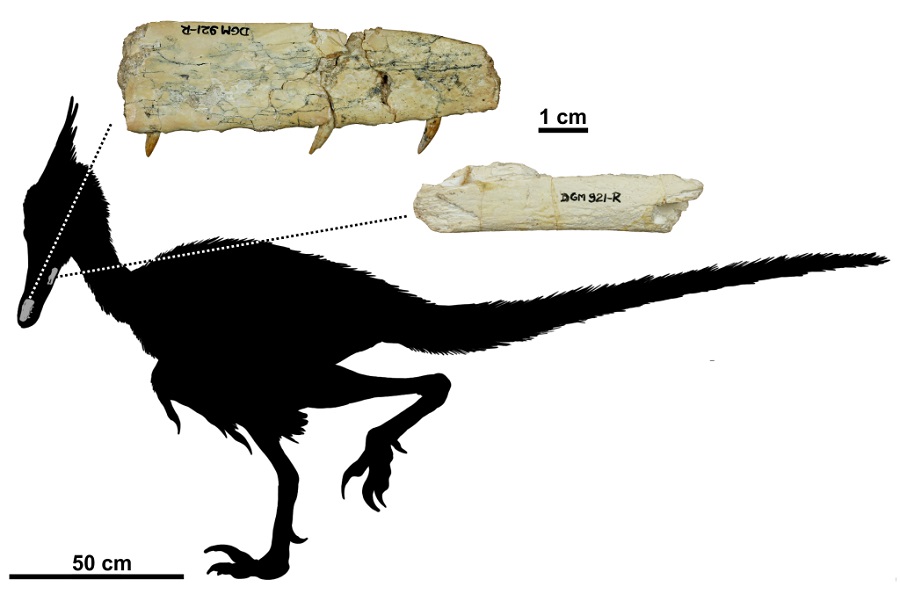RIO DE JANEIRO, BRAZIL – Ypupiara lopai is the latest Brazilian dinosaur species, it belongs to the dromaeosauridae family whose best known member is the velociraptor. It lived sometime between 72 and 66 million years ago, just before the fatal asteroid hit the Earth and extinguished all dinosaurs.
The dromaeosauridae are a subgroup of the theropods – dinosaurs that walk on two legs and are typically carnivorous, such as the tyrannosaurus.
Yet the Ypupiara is closer to today’s birds than to the T-Rex. “It’s as if it were the birds’ uncle, and the tyrannosaurs were the great-grandparents,” explains Arthur Brum, a doctoral student at the National Museum and leader of the research. Ypupiara had feathers but couldn’t fly because wings only emerged later in the bird lineage.

The Ypupiara’s fossil was found in the city of Peirópolis, in the Triângulo Mineiro, between the 1940s and 1960s. At the time its group was unknown, and there were no computer techniques available to analyze the find. In 2017, Arthur began studying it, suspecting that it was a new species. Researchers from the Amazon Museum, the Federal University of ABC, and the Earth Science Museum also took part in the study.
All that was left of Ypupiara was a jaw with three teeth and another fragment of the dental arch. Unfortunately, the fossil was lost in the National Museum fire in September 2018 but it had already been cataloged, measured and photographed, which allowed the team to continue their research.
“We were in doubt as to whether we should go ahead with the research because of the fire. But the information that the fossil preserved was very important for future studies, so we decided to publish it,” Arthur says.
In addition to being the first Brazilian dromaeosauridae, which is important in itself, the research may also assist other scientists in comparing fossils and possibly finding new species. “Other dromaeosauridae are likely to be found in Brazil in a few years’ time,” he continues.
Migration to Brazil
The location where the fossil was found can also help reconstruct the migratory history of these dinosaurs. Dromaeosauridae exist in several parts of the world, from Asia to the United States. One specific group, called unenlagiid exist only in South America. They have been found in Argentina, but the fossils discovered there date back 110 to 90 million years – older than the Ypupiara.
At that time there was a great desert, called the Cauiá, separating what is now Argentina and Brazil. The unenlagiids that lived in the neighboring country were unable to cross the desert. The researchers believe that over time the region became more humid, which would have enabled the migration and distribution of the animals throughout Brazil. This would explain why the Ypupiara was found living in Brazil in a later period than in Argentina, 72 million years ago.
In the Triângulo Mineiro these dinosaurs probably fed on fish and small lizards. The Ypupiara is thought to have measured 2.5 to 3 meters from snout to tail – a medium to large size pattern for this type of dinosaur.
Source: Super Interessante

